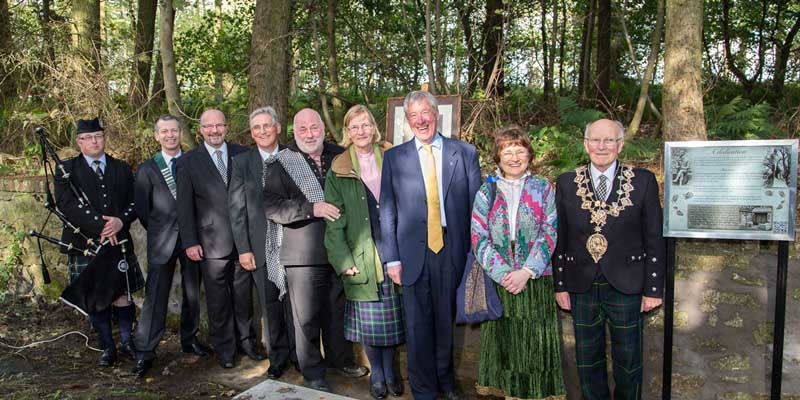The 82-year mystery of an Angus plaque dedicated to national poet Robert Burns has been solved.
A commemorative service has taken place in Hillside, after a two-year project discovered fresh evidence linking the Bard to the Mearns.
A plaque commemorates the place where the poet stopped to water his horse on his Highland tour of 1787.
Musician and researcher Dave Ramsay found the plaque was the work of four men Joseph Harris, Willie Herd, C.J. Shaw, and sculptor Adam Christie who removed stones from the wall and set the memorial, with no permission or ceremony.
Mr Ramsay said: ”This is an important part of the story of the fatherland of Burns in the Mearns, and Robert Burns, and we intend to keep September 13 as a day to remember the four men who first commemorated Burns’ visit to Hillside.”
Local man Robert Stewart, the new president of the Robert Burns World Federation, unveiled a new memorial during at the ceremony in Rosemount Road.
Montrose and Arbroath Burns Club presidents, Doctors Tom Brighton and Rusty Smith, gave readings from the poet’s diary, an account of his journey from Laurencekirk to Arbroath.
The Father of the Bard project researched the life and times of Burns’ father and Mearns native William Burnes.
When Burns rode to Edinburgh during a tour in 1787, which included visiting relatives and the lands of his ancestors in the Mearns, his journey took him from Laurencekirk to Montrose.
He and his travelling companion Willie Nicol stopped to water the horse in Hillside.
A simple sandstone plaque in the wall carries the date September 13, 1787, and the date 1930 indicates its original installation.
Despite exhaustive museum, archive and newspaper research, no record or photograph could be found about its origin.
Former Montrose man Harry Harris (90), now living in Yorkshire, provided the missing information. His father Joseph was a ward orderly at Sunnyside Hospital in Hillside, along with Willie Herd and its superintendent, C. J. Shaw.
The trio of Burns enthusiasts enlisted patient and Shetlander Adam Christie to sculpt a lasting reminder of the bard’s journey.
The foursome went out one night in 1930, removed some stones from the wall, and inserted the plaque.
Due to the subterfuge involved, this night defied research until Mr Harris’ involvement.
Glenbervie Burns Memorials Association has a plaque recording Burns’ overnight stay at the Boars Head Inn in Laurencekirk latterly the Gardenston Hotel which has since been demolished.
Mr Ramsay, who is also the association’s president, said: ”The Glenbervie Burns Memorials Association now have an additional piece of Burns heritage, and the remarkable story behind it, which we want to share with a wider audience.”
